by Klaus Schroiff, published July 2018
Introduction
Every mature system is offering the holy trinity of zoom lenses – thus a relatively fast ultra-wide-, standard- and tele-zoom lens. The only exception to the rule is Panasonic … they got two of them – one native Panasonic set (7-14mm f/4, 12-35mm f/2.8, 35-100mm f/2.8) and one Leica branded set (8-18mm f/2.8-4, 12-60mm f/2.8-4, 50-200mm f/2.8-4). You may notice that the Leica variant has a slightly different flavour regarding the variable aperture and the focal length range here. Unless you are religious about having a constant
aperture, the Leica lenses appear to be more attractive … assuming that the performance is high up there at least. A while ago we reviewed the Leica DG Vario-Elmarit 12-60mm f/2.8-4 ASPH OIS – a good lens albeit not jaw-droppingly superb. This review will focus on its wider cousin – the Leica DG Vario-Elmarit 8-18mm f/2.8-4 ASPH – thus an ultra-wide zoom lens with a focal range equivalent to “16-36mm”.
Usually, we are associating Leica lenses with sky-high price tags. However, this perception isn’t entirely true. At 1000USD/1100EUR, it is just marginally more expensive than the slightly wider Panasonic 7-14mm f/4 ASPH and actually cheaper than the Olympus M.Zuiko 7-14mm f/2.8 PRO. There’s also another message in this list of lenses – MFT users are blessed with choices in this quality class.
The Leica DG Vario-Elmarit 8-18mm f/2.8-4 ASPH is beautifully made with an outer shell made of a metal. The zoom- and focus rings operate smoothly. The physical length of the lens remains constant throughout the zoom and focus range albeit there’s an inner tube that moves inside the lens body. Unlike many other professional lenses, it is not only splash- and dust-proof but also freeze-proof down to -10C. A petal-shaped lens hood is part of the package.

The AF shows no surprises – it is quick and silent. As usual manual focusing works by-wire thus you are driving the lens motor by turning the focus ring. An optical image stabilizer is not provided but there are many MFT cameras that provide you with in-camera IS anyway.
| Specifications | |
|---|---|
| Equiv. focal length | “16-36mm” (full format equivalent) |
| Equiv. aperture | “f/5.6-8” (full format equivalent in terms of depth-of-field) |
| Optical construction | 15 Elements in 10 Groups (3xaspherical, 1xaspherical-ED, 1x ED, 1xUHR) |
| Number of aperture blades | 7 (circular) |
| min. focus distance | 0.23m (1:8.33) |
| Dimensions (L x W) | 73.4x88mm |
| Weight | 315g |
| Filter size | 67mm |
| Hood | Petal-shaped, supplied, bayonet mount |
| Other features | Dust- and splash-proof, Freeze-proof (-10C), Nano-Surface Coating |
Distortion
The distortion characteristic follows the usual pattern of MFT lenses in this class. Thus in real-life, you won’t notice any substantial distortions. At 8mm there are visible traces of barrel distortions (1.4%) but it’s a non-issue at 12mm and 18mm really.


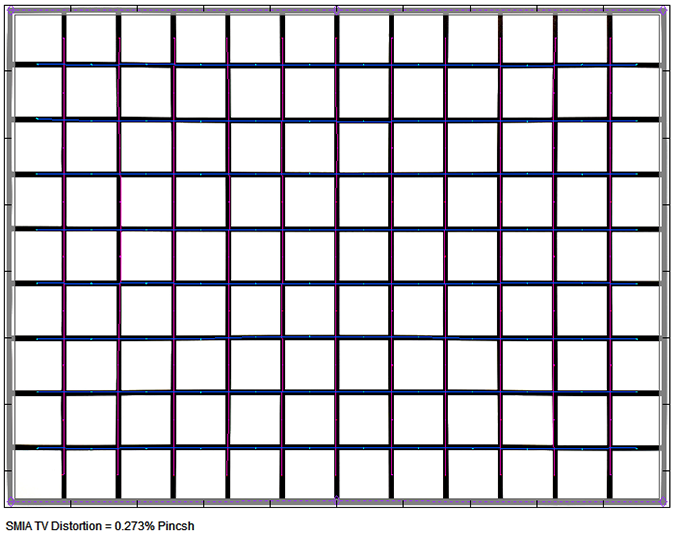
The native characteristic of the lens is very different though. If you disable image auto-correction, there’s an extreme amount of barrel distortions
at 8mm (6.6%). The more you zoom out, the fewer distortions are apparent though. At 12mm, they are down to a moderate 2.4% and they are gone at 18mm.
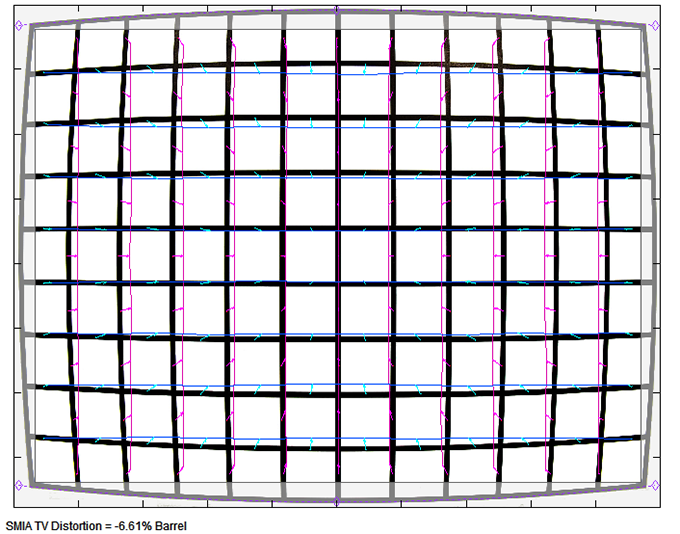
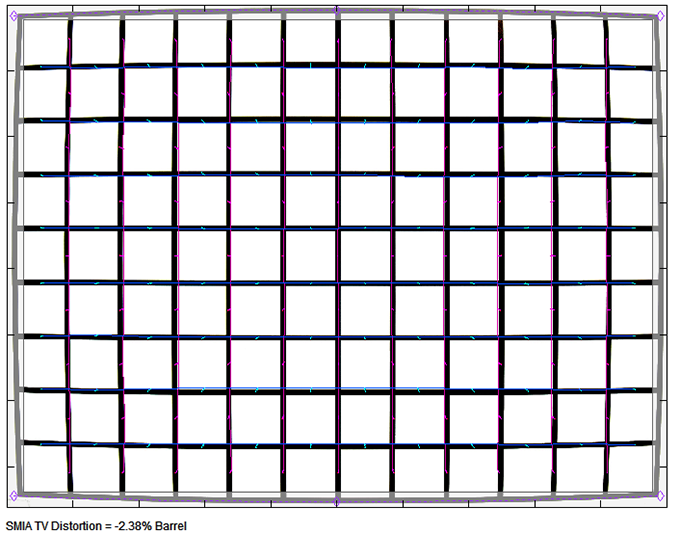

Vignetting
Image auto-correction is also active with respect to vignetting. Normally you can just point and shoot without caring about light falloff – at around 0.5EV (f-stops) you will barely notice this.
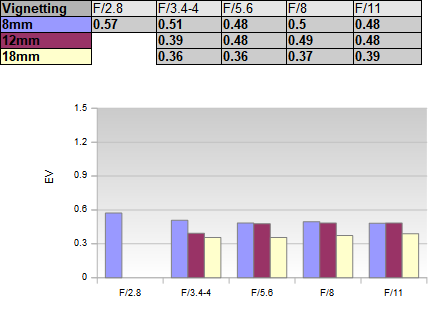
The situation is once again different when looking at the raw image albeit it remains within the common boundaries of lenses in this class.
The vignetting is worst at 8mm f/2.8 (unsurprisingly) with a light falloff of 1.6EV (f-stops) and that’s clearly noticeable. Most of the vignetting is gone
from f/5.6 onward though. At 12mm the issue is substantially reduced. You may still spot some vignetting at f/3.4 but from f/5.6 it’s already
rather irrelevant. The characteristic is very moderate at 18mm.
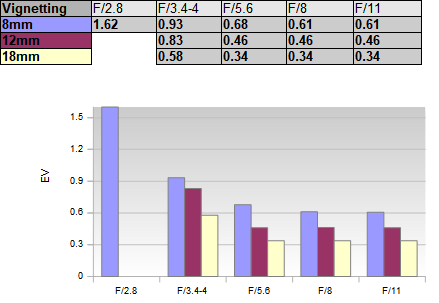
MTF (resolution)
The most important question of them all is, of course – how sharp is it? It’s sharp – mostly at least. The quality of the image center is excellent at all mainstream setting at the wide end of the range. The borders are generally good to very good and the corners reach good levels. As mentioned in previous reviews, it is likely that the image auto-correction is a limiting factor. Compensating a distortion of 6.6% is reducing the corner sharpness due to the amount of image stretching that is required here. The corners are slightly improved at 12mm while the general characteristic remains intact. The center quality is marginally reduced at 18mm although the borders/corners are actually better here compared to the wider settings. As usual, you shouldn’t stop down beyond f/8 because diffraction effects will have a negative impact on the image quality.
The centering quality of the tested sample was good albeit not great. Field curvature is noticeable in the mid-range (which is a little odd). In certain scenes, this will introduce a bit of softness in the corners.
Please note that the MTF results are not directly comparable across the different systems!
Below is a simplified summary of the formal findings. The chart shows line widths per picture height (LW/PH) which can be taken as a measure for sharpness. If you want to know more about the MTF50 figures you may check out the corresponding Imatest Explanations

Chromatic Aberrations (CAs)
Lateral CAs are very low and nothing to worry about.

Sample Images
Competition
As mentioned in the introduction, you have at least 3 lenses in this class to choose from – if you include the consumer-grade Olympus M.Zuiko 9-18mm f/f4.5-5.6 ED (not shown below) there are even 4. The funny thing is – there’s not a hell of a difference between them in terms of optical quality. They are all “good” really – although they stay short of excellent. The Olympus M.Zuiko 7-14mm f/2.8 PRO (to the left below) is certainly the most impressive one in terms of visual appearance. Whether you really require a constant aperture of f/2.8 – well, that’s up to you really. On the downside, it’s rather heavy for an MFT lens and it has a bulb-like front element thus you can’t mount front filters. The latter also applies to the Panasonic 7-14mm f/4 ASPH (center). Thanks to the moderate aperture of f/4, it is the smallest of the gang which certainly has its appeal. The Leica DG Vario-Elmarit 8-18mm f/2.8-4 ASPH (to the right) sits in between those two lenses.

Visual comparison courtesy of camerasize.com.
As you might expect, the Leica DG Vario-Elmarit 8-18mm f/2.8-4 ASPH is a very decent performer in its category. The image center is very sharp and the borders and corners are pretty good as well - technically at least. Field curvature is a bit of an issue at 12mm albeit that's not unheard of in this class (albeit usually at the wide end). Image distortions as well as vignetting are low when taking advantage of image auto-correction (obviously). The quality of the native design isn't quite as hot in these respects though. Lateral CAs are very low and contribute to the high-quality perception. If pushed you will be able to spot some ghostings are a bit of glare with strong light sources in the scene. However, it isn't worse than the competition in this respect.
A highlight of the lens (as well as its Leica cousins) is the build quality. We really wished this would be standard across all lenses. The Leica lens feels both sturdy and extremely well assembled with smooth controls and weather sealing on top of all that. Some may regret that Panasonic skipped an image stabilizer but honestly we agree with this approach because it's already difficult enough to produce ultra-wide lenses without much sample variations.
Overall the Leica DG Vario-Elmarit 8-18mm f/2.8-4 ASPH follows a balanced approach in this category. It skips a constant aperture in favour of having front filters combined with a compact size. We wouldn't state that it excels compared to its Olympus and Panasonic mates but it is in the very same league and as such an appealing option.
-
Optical Quality
-
Build Quality
-
Price / Performance


